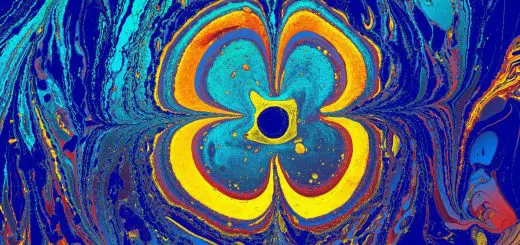Sacred Animals: Historical Significance

Looking for more amazing products? Check out our online store and explore our collection here! Happy shopping!
Before diving in, please note: This post is for informational purposes only. If you’d like to know more about how we approach topics, feel free to check out our friendly Disclaimer Page.
Hey there, amazing readers! 
We’re committed to delivering quality posts, and your support (even just sticking around despite the ads) means everything to us. So, bear with us, and thanks for helping us keep the good vibes rolling. Now, on to the fun stuff!
TRANSLATE BUTTON AT THE END OF THE ARTICLE
Introduction to Sacred Animals
In various cultures around the world, animals have held a significant place of reverence and importance.
These creatures, known as sacred animals, are believed to possess divine qualities or connections to spiritual realms.
The concept of sacred animals has been prevalent throughout history, with ancient civilizations attributing profound symbolism and meaning to certain species.
From the majestic lion in Africa to the revered cow in India, sacred animals play a crucial role in religious practices, art, literature, and even daily life.
This article delves into the historical significance of sacred animals, exploring their roles in different cultures, religious practices, and artistic expressions.
Ancient Civilizations and Sacred Animals
Ancient civilizations such as the Egyptians, Greeks, Romans, and Native Americans all held sacred animals in high regard.
In ancient Egypt, the cat was revered for its connection to the goddess Bastet, who symbolized protection, fertility, and motherhood.
Cats were considered sacred and even worshipped as manifestations of the divine.
In Greek mythology, the owl was associated with the goddess Athena, representing wisdom and foresight.
The Romans also had their sacred animals, with the eagle symbolizing power and strength as the emblem of Jupiter, the king of gods.
Native American tribes often revered animals like the wolf, bear, and eagle, attributing spiritual significance and symbolism to each creature.
Symbolism of Animals in Different Cultures
Across various cultures, animals have been assigned symbolic meanings based on their characteristics and behaviors.
For example, the snake is often associated with transformation and rebirth in many cultures, including ancient Egypt and Mesoamerica.
The elephant symbolizes strength, wisdom, and prosperity in Hinduism and Buddhism, while the dragon is a symbol of power and good fortune in Chinese culture.
In African traditions, the lion represents courage, leadership, and protection.
These symbolic meanings of animals have been passed down through generations and continue to shape beliefs and practices in modern societies.
Role of Sacred Animals in Religious Practices
Sacred animals play a vital role in religious practices worldwide, serving as intermediaries between humans and the divine.
In Hinduism, cows are considered sacred and worshipped as manifestations of the divine mother, providing sustenance, fertility, and protection.
In Buddhism, the lotus flower symbolizes purity and enlightenment, often depicted alongside sacred animals like the dragon and elephant.
The wolf holds spiritual significance in Native American traditions, symbolizing loyalty, family, and intuition.
These sacred animals are revered in rituals, ceremonies, and daily offerings, strengthening the bond between humans and the spiritual realm.
Connections Between Animals and Deities
Many cultures believe in the close connections between sacred animals and deities, viewing these creatures as divine manifestations or messengers.
In ancient Egyptian mythology, the falcon was associated with the god Horus, symbolizing protection, sky, and kingship.
The Hindu god Ganesha is often depicted with the head of an elephant, representing wisdom, intellect, and removal of obstacles.
In Norse mythology, the wolf Fenrir was a symbol of chaos and destruction, linked to the god Odin.
These connections between animals and deities illustrate the intricate relationships between the spiritual and natural worlds in various belief systems.
Importance of Animal Totems
Animal totems are spiritual symbols that represent a person’s connection to a specific animal guide or spirit.
Many indigenous cultures around the world believe in the power of animal totems to provide guidance, protection, and wisdom.
Each animal totem is believed to possess unique qualities and attributes that individuals can learn from and embody in their lives.
For example, the bear symbolizes strength, courage, and introspection, while the hummingbird represents joy, resilience, and adaptability.
By honoring animal totems, individuals can tap into the wisdom and guidance of these sacred creatures, fostering a deeper connection to the natural world.
Influence of Sacred Animals on Art and Literature
The reverence for sacred animals has greatly influenced art, literature, and cultural expressions throughout history.
From ancient cave paintings depicting sacred animals to intricate sculptures and paintings in temples and palaces, these creatures have been central themes in artistic creations.
In literature, sacred animals often serve as symbols of power, wisdom, and spirituality, inspiring myths, fables, and epic tales.
Artists and writers continue to draw upon the symbolism and imagery of sacred animals to convey deeper meanings and messages in their works, resonating with audiences across time and cultures.
Modern Interpretations of Sacred Animals
In modern times, the significance of sacred animals continues to be celebrated and revered in various ways.
Conservation efforts for endangered species often draw upon the symbolism and cultural importance of sacred animals to raise awareness and support for their protection.
Many people also incorporate animal totems and sacred symbols into their spiritual practices, seeking guidance, healing, and connection to the natural world.
Additionally, the depiction of sacred animals in popular culture, art, and fashion reflects a continued fascination with the spiritual and mystical qualities attributed to these creatures.
The enduring legacy of sacred animals reminds us of the profound connections between humans, animals, and the divine.
Conservation Efforts for Sacred Species
As many sacred animals face threats of extinction due to habitat loss, poaching, and climate change, conservation efforts are essential to ensure their survival for future generations.
Organizations and initiatives dedicated to protecting sacred species work tirelessly to preserve their habitats, combat illegal wildlife trade, and raise awareness about the importance of biodiversity.
By safeguarding these animals and their environments, we can uphold the cultural and spiritual significance they hold for communities around the world.
Conservation efforts for sacred species not only protect wildlife but also honor the deep connections between humans and the natural world.
Controversies Surrounding Sacred Animal Practices
While the worship and reverence of sacred animals are deeply rooted in many cultures, controversies and ethical dilemmas have arisen surrounding certain practices.
Issues such as animal sacrifice, exploitation, and mistreatment in the name of religious rituals have sparked debates about the ethical treatment of animals.
Some argue that traditional practices involving sacred animals are outdated and inhumane, while others defend these customs as integral parts of cultural heritage and spiritual beliefs.
Striking a balance between respecting cultural traditions and upholding animal welfare standards remains a complex and ongoing challenge in societies where sacred animal practices are prevalent.
Ethical Considerations in Sacred Animal Worship
In the realm of sacred animal worship, ethical considerations play a crucial role in ensuring the well-being and dignity of these creatures.
Respect for the sanctity of life, humane treatment of animals, and conservation of endangered species are paramount in upholding ethical practices in sacred animal worship.
Many religious traditions have guidelines and teachings that promote compassion, stewardship, and reverence for all living beings, including sacred animals.
By fostering a deeper understanding of the interconnectedness between humans and animals, individuals can navigate the complexities of sacred animal worship with mindfulness, empathy, and ethical awareness.
Impact of Sacred Animals on Human Behavior
The reverence for sacred animals has a profound impact on human behavior, shaping beliefs, values, and cultural practices.
By honoring and worshipping sacred animals, individuals express gratitude, humility, and reverence for the natural world.
The symbolism and spiritual significance of these creatures inspire people to cultivate virtues such as courage, wisdom, and compassion in their lives.
The connection to sacred animals fosters a sense of interconnectedness and harmony with nature, encouraging stewardship and respect for all living beings.
Through rituals, ceremonies, and daily practices involving sacred animals, humans engage in a sacred dialogue with the divine, nurturing a deeper appreciation for the beauty and diversity of the animal kingdom.
Conclusion
In conclusion, sacred animals have played a significant role in shaping human beliefs, practices, and cultural expressions throughout history.
From ancient civilizations to modern societies, these creatures hold profound symbolism, spiritual significance, and cultural relevance.
The connections between animals and deities, the symbolism of animal totems, and the influence of sacred animals on art, literature, and daily life illustrate the enduring impact of these creatures on human consciousness.
As we navigate the complexities of sacred animal worship, conservation efforts, and ethical considerations, we are reminded of the importance of honoring and protecting the sacred bond between humans and animals.
By embracing the wisdom and guidance of sacred animals, we can deepen our connection to the natural world and cultivate a sense of reverence, harmony, and respect for all living beings.

The Enlightenment Journey is a remarkable collection of writings authored by a distinguished group of experts in the fields of spirituality, new age, and esoteric knowledge.
This anthology features a diverse assembly of well-experienced authors who bring their profound insights and credible perspectives to the forefront.
Each contributor possesses a wealth of knowledge and wisdom, making them authorities in their respective domains.
Together, they offer readers a transformative journey into the realms of spiritual growth, self-discovery, and esoteric enlightenment.
The Enlightenment Journey is a testament to the collective expertise of these luminaries, providing readers with a rich tapestry of ideas and information to illuminate their spiritual path.
Our Diverse Expertise
While our primary focus is on spirituality and esotericism, we are equally passionate about exploring a wide range of other topics and niches 

To ensure we provide the most accurate and valuable insights, we collaborate with trusted experts in their respective domains 
Our blog originally focused on spirituality and metaphysics, but we’ve since expanded to cover a wide range of niches. Don’t worry—we continue to publish a lot of articles on spirituality! Frequently visit our blog to explore our diverse content and stay tuned for more insightful reads.
Hey there, amazing reader! 
Check out our store here and take a peek at some of our featured products below! Thanks for being awesome!










